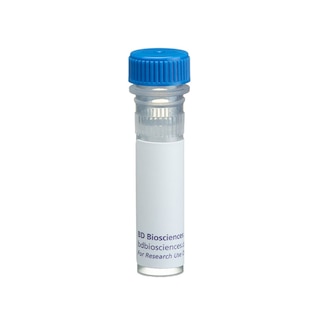-
Reagents
- Flow Cytometry Reagents
-
Western Blotting and Molecular Reagents
- Immunoassay Reagents
-
Single-Cell Multiomics Reagents
- BD® OMICS-Guard Sample Preservation Buffer
- BD® AbSeq Assay
- BD® Single-Cell Multiplexing Kit
- BD Rhapsody™ ATAC-Seq Assays
- BD Rhapsody™ Whole Transcriptome Analysis (WTA) Amplification Kit
- BD Rhapsody™ TCR/BCR Next Multiomic Assays
- BD Rhapsody™ Targeted mRNA Kits
- BD Rhapsody™ Accessory Kits
- BD® OMICS-One Protein Panels
-
Functional Assays
-
Microscopy and Imaging Reagents
-
Cell Preparation and Separation Reagents
-
- BD® OMICS-Guard Sample Preservation Buffer
- BD® AbSeq Assay
- BD® Single-Cell Multiplexing Kit
- BD Rhapsody™ ATAC-Seq Assays
- BD Rhapsody™ Whole Transcriptome Analysis (WTA) Amplification Kit
- BD Rhapsody™ TCR/BCR Next Multiomic Assays
- BD Rhapsody™ Targeted mRNA Kits
- BD Rhapsody™ Accessory Kits
- BD® OMICS-One Protein Panels
- Belgium (English)
-
Change country/language
Old Browser
This page has been recently translated and is available in French now.
Looks like you're visiting us from United States.
Would you like to stay on the current country site or be switched to your country?
BD Transduction Laboratories™ Purified Mouse Anti-Ras-GAP
Clone 13/RAS-GAP (RUO)




Western blot analysis of Ras-GAP on a MDCK cell lysate (Canine kidney; ATCC CCL-34). Lane 1: 1:1000, lane 2: 1:2000, lane 3: 1:4000 dilution of the mouse anti- Ras-GAP antibody.

Immunofluorescence staining of Hs 766T cells (Human pancreatic carcinoma; ATCC HTB-134).


BD Transduction Laboratories™ Purified Mouse Anti-Ras-GAP

BD Transduction Laboratories™ Purified Mouse Anti-Ras-GAP

Regulatory Status Legend
Any use of products other than the permitted use without the express written authorization of Becton, Dickinson and Company is strictly prohibited.
Preparation And Storage
Recommended Assay Procedures
Western blot: Please refer to http://www.bdbiosciences.com/pharmingen/protocols/Western_Blotting.shtml
Product Notices
- Since applications vary, each investigator should titrate the reagent to obtain optimal results.
- Please refer to www.bdbiosciences.com/us/s/resources for technical protocols.
- Source of all serum proteins is from USDA inspected abattoirs located in the United States.
- Caution: Sodium azide yields highly toxic hydrazoic acid under acidic conditions. Dilute azide compounds in running water before discarding to avoid accumulation of potentially explosive deposits in plumbing.
Data Sheets
Companion Products

.png?imwidth=320)
Ras-GAP, a protein of approximately 120kDa, is thought to serve as a down-regulator of p21ras by stimulating its otherwise weak intrinsic GTPase activity. Both growth factor receptor and oncogene-encoded tyrosine kinases require functional membrane-associated Ras proteins in order to affect mitogenesis. The manner in which p21ras acts as a signal transducer is still a matter of speculation. The Ras-GTPase stimulating activity has been found to reside in the carboxy-terminal region of Ras-GAP, while the amino-terminal region contains two SH2 domains and an intervening SH3 domain. In cells stimulated with EGF or transformed by pp60 [v-src], Ras-GAP becomes phosphorylated on both tyrosine and serine residues and forms distinct complexes with two phosphorylated proteins of 62 and 190kDa. The tyrosine phosphorylation of Ras-GAP may modulate its subcellular localization and activity as a negative regulator of p21ras.
This antibody routinely tested by western blot analysis. Other applications were tested at BD Biosciences Pharmingen during antibody development only or reported in the literature.
Development References (5)
-
Cichowski K, Santiago S, Jardim M, Johnson BW, Jacks T. Dynamic regulation of the Ras pathway via proteolysis of the NF1 tumor suppressor. Genes Dev. 2003; 17(4):449-454. (Biology: Western blot). View Reference
-
Dupont H, Blancq M. Formation of complexes involving RasGAP and p190 RhoGAP during morphogenetic events of the gastrulation in xenopus. Eur J Biochem. 1999; 265(2):530-538. (Biology: Immunoprecipitation, Western blot). View Reference
-
Kaplan DR, Morrison DK, Wong G, McCormick F, Williams LT. PDGF beta-receptor stimulates tyrosine phosphorylation of GAP and association of GAP with a signaling complex. Cell. 1990; 61(1):125-133. (Biology). View Reference
-
Molloy CJ, Bottaro DP, Fleming TP, Marshall MS, Gibbs JB, Aaronson SA. PDGF induction of tyrosine phosphorylation of GTPase activating protein. Nature. 1989; 342(6250):711-714. (Biology). View Reference
-
Sato H, Ogata H, De Luca LM. Annexin V inhibits the 12-O-tetradecanoylphorbol-13-acetate-induced activation of Ras/extracellular signal-regulated kinase (ERK) signaling pathway upstream of Shc in MCF-7 cells. Oncogene. 2000; 19(25):2904-2912. (Biology: Western blot). View Reference
Please refer to Support Documents for Quality Certificates
Global - Refer to manufacturer's instructions for use and related User Manuals and Technical data sheets before using this products as described
Comparisons, where applicable, are made against older BD Technology, manual methods or are general performance claims. Comparisons are not made against non-BD technologies, unless otherwise noted.
For Research Use Only. Not for use in diagnostic or therapeutic procedures.